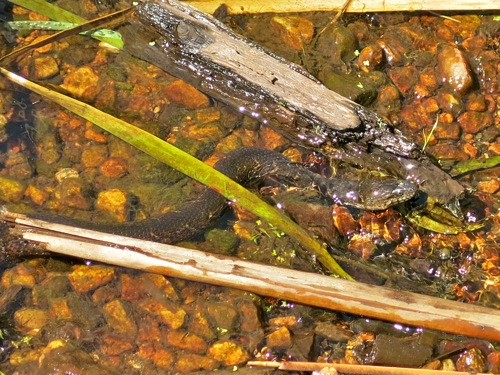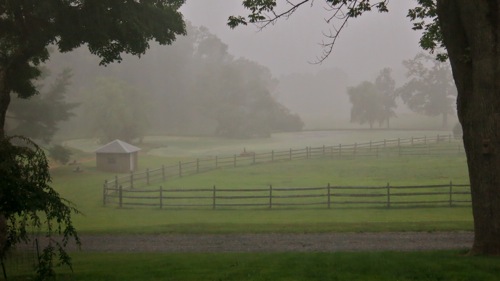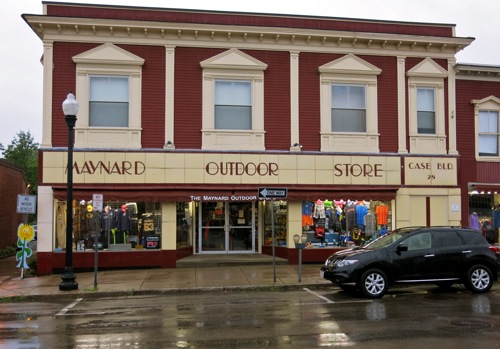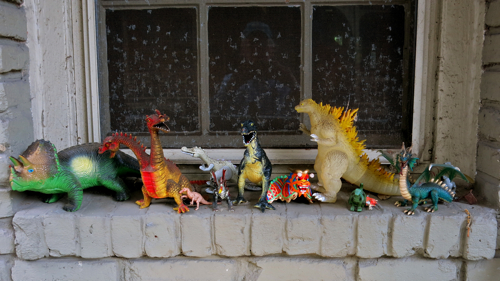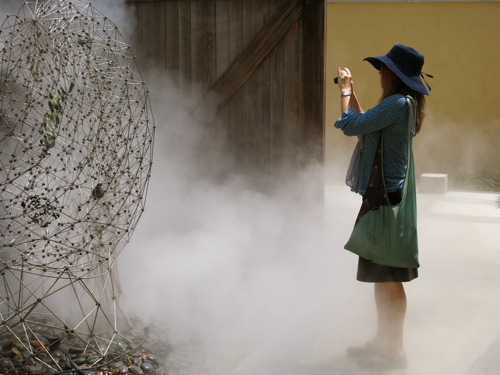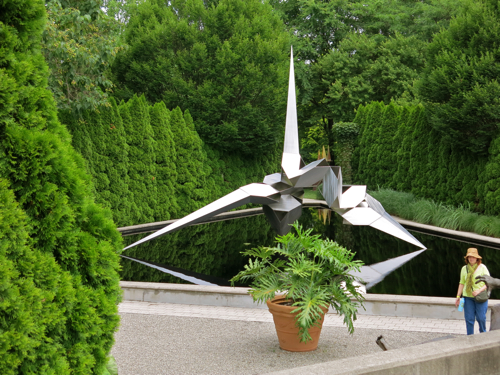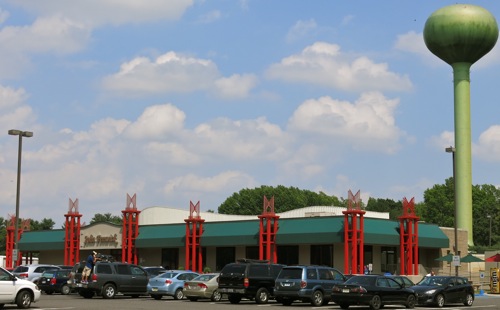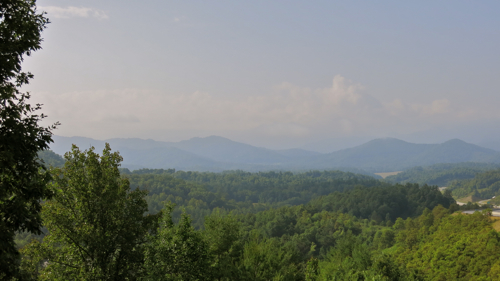I took a short trip to Sleepy Hollow Cemetery in Concord, Mass., today to pay a visit to the grave of my favorite Transcendentalist. The bronze plaque that marks her grave reads:
Elizabeth Palmer Peabody
1804-1894
A Teacher of three generations of Children,
and the founder of Kindergarten in America.
Every humane cause had her sympathy,
and many her active aid.
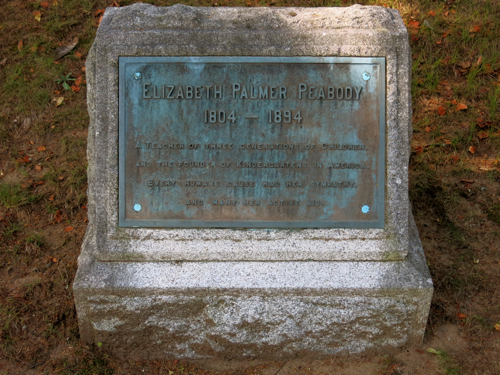
One of Elizabeth Palmer Peabody’s protegees was Lucy Wheelock, the founder of Wheelock College. My mother attended Wheelock College to train as a teacher, and learned from Lucy Wheelock herself. I learned some of my teaching skills from my mother, so Elizabeth Palmer Peabody was the teacher of a teacher of one of my teachers.
While I was there, I walked over to Author’s Ridge to walk by the graves of the most famous Transcendentalists buried in Concord: Nathaniel Hawthorne, Ralph Waldo Emerson, Henry David Thoreau, and Louisa May Alcott. Tourists had piled small stones, pennies, and twigs on top of and around their gravestones.
Thirty years ago, no one piled stones or pennies on the authors’ gravestones. When this first started happening, it annoyed me, and I’d clean off the gravestones of all that litter. But now this act has become a part of New England folk culture, and you will not only see stones placed by tourists on the graves of famous people, but also stones placed by people on the graves of their family members. Now I leave the stones and twigs, although I still stop to sweep off the pennies, because the copper dissolves in New England’s slightly acidic rain and discolors the gravestones.
I wonder if this act of placing small stones arises out of some deeply-held religious memory in Western culture. These look like small cairns to me — in ancient Greek religion, Hermes, the god of travelers, dwelt in cairns — though gravestones don’t mark a physical path, they can mark a spiritual path.
My second favorite Transcendentalist is Louisa May Alcott. Her grave had no pennies (she’s worth more than a penny, I guess), but people had piled stones and twigs around her headstone with her initials — she’s in a family plot with a main gravestone, then all the family members have small stones with just their initials — and the flush stone with her full name that was installed later. Someone had left her a note, now in tatters from exposure to rain and sun, and unreadable. In the past, I’ve read other notes that people have left for her, saying how much her books have meant to them. I think about it this way: casual tourists can leave stones without any forethought; those whose lives have been changed by Alcott’s books think to leave a written memorial.
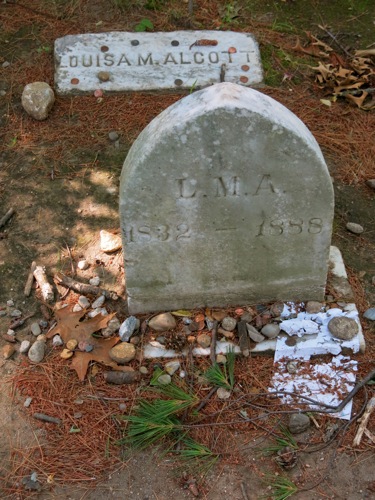
Above: Louisa May Alcott’s gravestone, Author’s Ridge, Sleepy Hollow Cemetery, Concord, Mass.
I couldn’t figure out who some graves get stones, and some don’t. Lidian Jackson Emerson, Ralph Waldo Emerson’s second wife, had stones piled on her gravestone, but Sophia Peabody Hawthorne, Nathaniel Hawthorne’s wife, had none. As much as I like Lidian Jackson Emerson, Sophia Peabody Hawthorne strikes me as the more impressive of the two women. Before she was married, Sophia Peabody pursued a career as an artist, something unheard of for women in early nineteenth century America; she was an intellectual, though somewhat overshadowed by her older sister Elizabeth, and part of the Transcendentalist circle. Does Lidian fill more of an archetypal role in the common religious imagination of New England folk culture? Or is it simply that the people who would value Sophia Peabody Hawthorne as an artist, and intellectual, and a symbol of early feminist consciousness are not the type of people who leave stones on graves?





